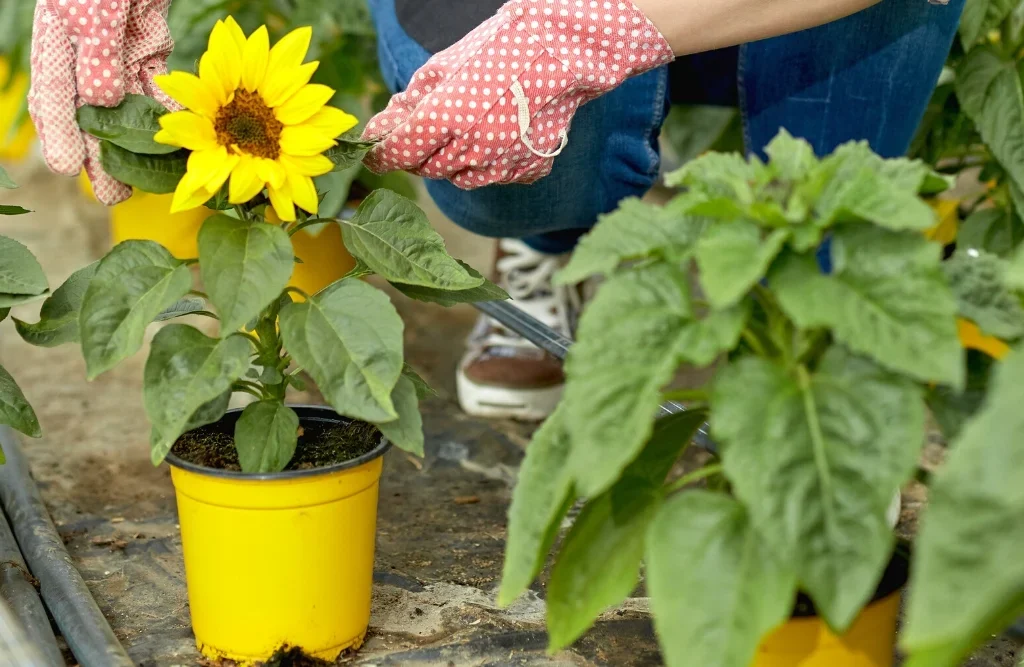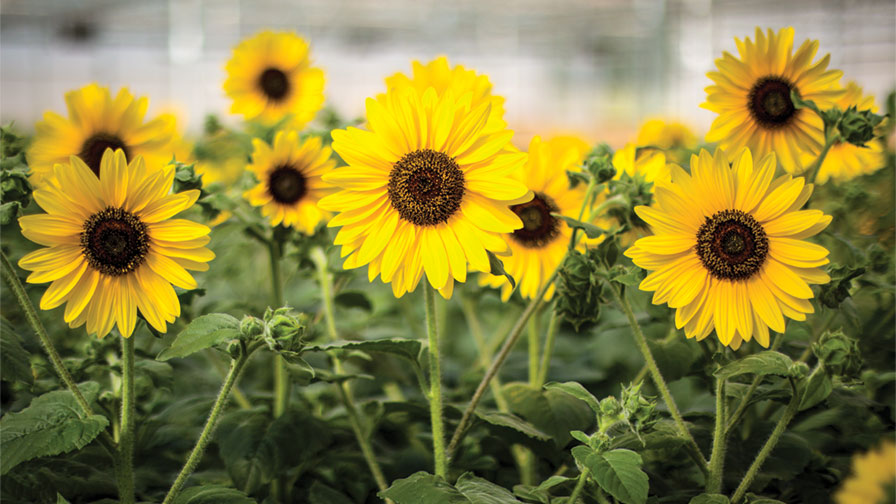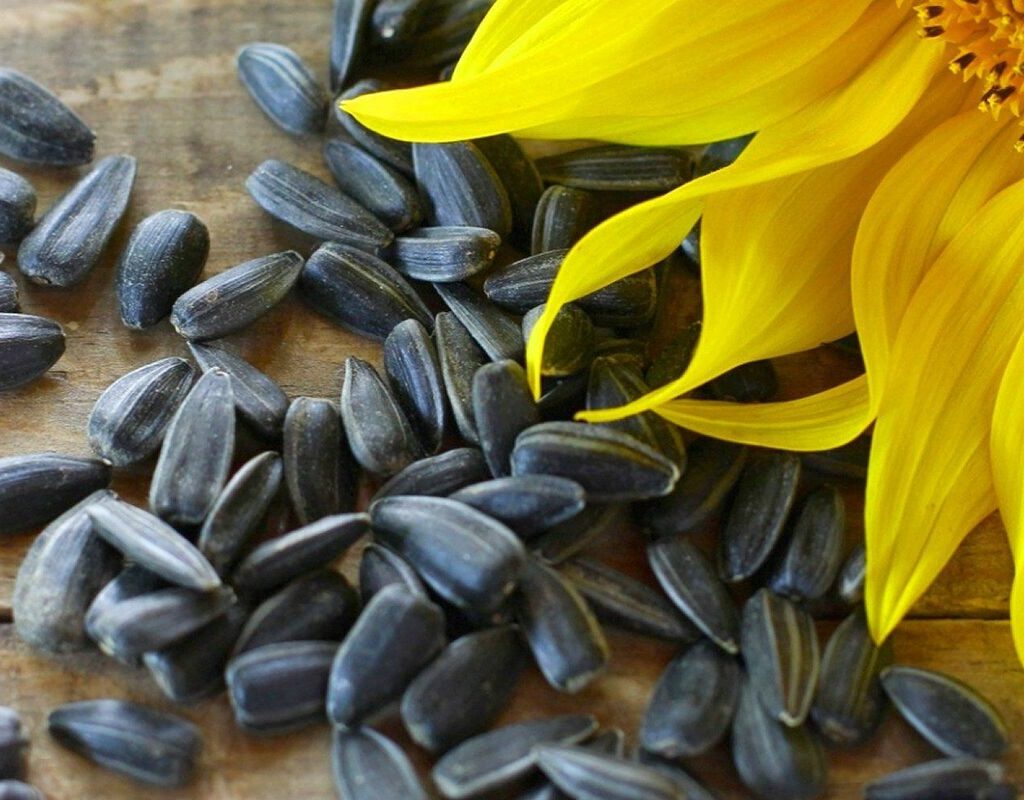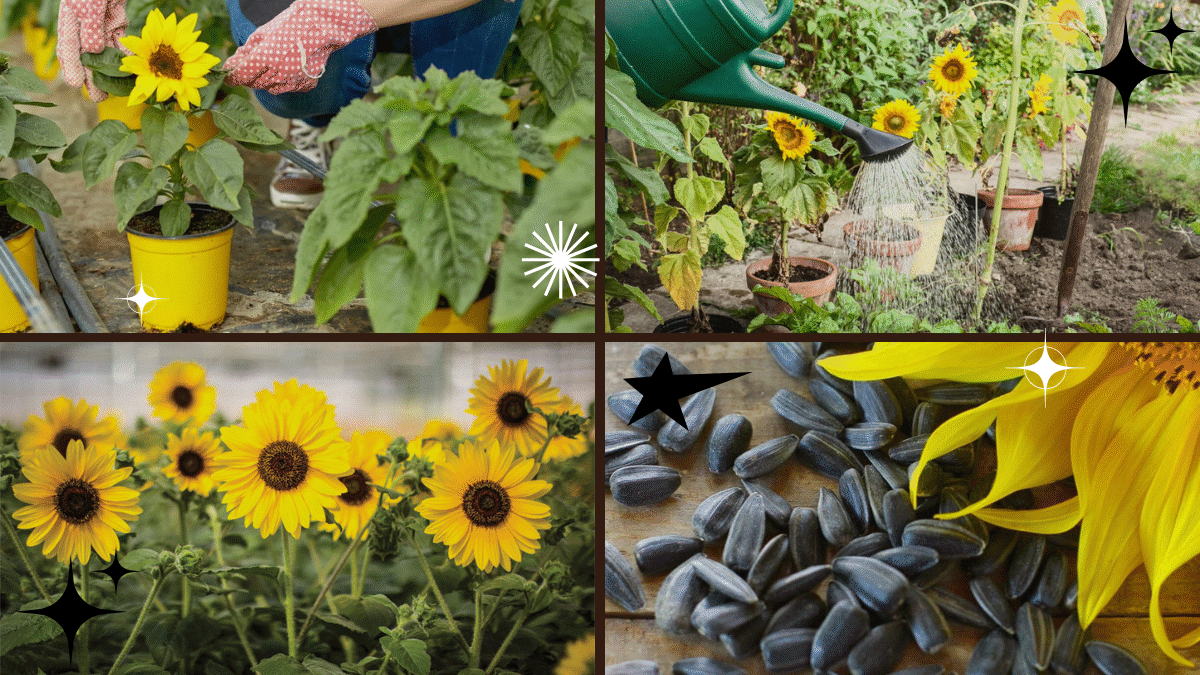Few flowers capture the warmth and cheer of summer quite like sunflowers. With their towering stems and bold, golden faces tracking the sun, these blooms bring life, color, and joy to any garden or backyard. And the best part? Sunflowers are surprisingly easy to grow, making them perfect for beginners and seasoned gardeners alike.
In this comprehensive guide, we’ll walk you through how to plant and grow a sunflower successfully — from selecting the right seeds to nurturing tall, healthy plants bursting with vibrant blooms.

Why Grow Sunflowers?
Sunflowers (Helianthus annuus) aren’t just stunning to look at; they’re also beneficial to your garden:
- Attract pollinators like bees and butterflies.
- Provide seeds for birds, wildlife, and even your own snacking.
- Improve soil health by drawing up nutrients from deep within the ground.
- Make excellent natural screens or borders due to their height and density.
Whether you plant them for their beauty, environmental benefits, or edible seeds, sunflowers are a rewarding addition to any outdoor space.

Types of Sunflowers to Grow
Before planting, it’s important to pick the right sunflower variety for your space and goals:
- Giant Sunflowers (e.g., ‘Mammoth’): Can grow up to 12 feet tall with massive blooms.
- Dwarf Varieties (e.g., ‘Teddy Bear’ or ‘Little Becka’): Ideal for small gardens or containers, reaching 1–3 feet tall.
- Colored Sunflowers (e.g., ‘Autumn Beauty’ or ‘Chianti’): Feature rich hues of orange, red, and burgundy alongside the classic yellow.
- Multi-branching Types (e.g., ‘Soraya’): Produce several blooms on one plant for an extended flowering season.
Choose based on your available space, desired height, and preferred look.

When to Plant Sunflowers
Sunflowers thrive in warm weather and need plenty of sunshine to flourish. The best time to plant is late spring, after the last frost has passed and soil temperatures reach at least 55°F (13°C) — typically April to June, depending on your location.
In warmer regions, you can stagger plantings every two weeks for continuous blooms throughout summer.

Where to Plant Sunflowers
These sun-loving plants need:
- Full sun: At least 6–8 hours of direct sunlight daily.
- Well-drained soil: While sunflowers tolerate various soil types, they prefer loose, nutrient-rich soil with good drainage.
- Sheltered from strong winds: Their tall stems can be prone to toppling if not supported or shielded.
Pro Tip: Avoid planting sunflowers too close to other plants that require high nutrients, as sunflowers are heavy feeders.
How to Plant Sunflowers
1. Prepare the Soil
- Loosen soil to a depth of about 2 feet and a width of 2–3 feet for giant varieties.
- Mix in organic compost or aged manure to boost soil fertility.
- Check pH levels — sunflowers prefer a neutral to slightly acidic soil pH (6.0 to 7.5).
2. Sow the Seeds
- Direct sow seeds outdoors after frost danger has passed.
- Plant seeds about 1 to 1.5 inches deep.
- Space seeds 6 inches apart for dwarf varieties and 12–24 inches apart for tall varieties.
- If planting in rows, leave 2–3 feet between rows.
Tip: For continuous blooms, plant new seeds every 2–3 weeks until mid-summer.
3. Water Gently
After planting, water the area thoroughly and keep the soil evenly moist until germination, which usually occurs within 7–10 days.
Caring for Sunflowers
Once your sunflowers sprout, they’ll need a bit of attention to ensure healthy, vigorous growth.
Watering
- Keep soil consistently moist but not waterlogged.
- Water deeply at the base to encourage strong, deep roots.
- Once established, sunflowers are fairly drought-tolerant but still benefit from regular watering during dry spells.
Fertilizing
- Apply a balanced, all-purpose fertilizer when plants are about 1 foot tall.
- Avoid excessive nitrogen, which can cause lush leaves at the expense of blooms.
Staking Tall Varieties
- Giant sunflowers may need staking to support their heavy heads and prevent them from toppling.
- Use wooden stakes or bamboo poles, tying loosely with garden twine as the plant grows.
Weeding and Mulching
- Keep the area around your sunflowers weed-free to reduce competition for nutrients.
- Apply a layer of organic mulch around the base to retain moisture and suppress weeds.
Pest and Disease Management
Sunflowers are relatively hardy but can encounter a few pests and problems:
- Aphids: Spray off with a strong jet of water or treat with neem oil.
- Birds and Squirrels: These critters love sunflower seeds — cover young plants with netting if necessary.
- Downy Mildew or Rust: Ensure good air circulation and avoid overhead watering.
Regular inspection and early intervention will help keep your sunflowers healthy.
When and How to Harvest Sunflowers
Depending on the variety, sunflowers typically bloom 70–100 days after planting.
For Display:
- Cut flowers in the morning before they fully open for the longest vase life.
- Use sharp, clean scissors or garden shears.
- Place stems in water immediately after cutting.
For Seeds:
- Wait until the back of the sunflower head turns yellow-brown and the seeds look plump and striped.
- Cut the head, leaving 12–18 inches of stem.
- Hang it upside down in a warm, dry, well-ventilated space.
- Once dry, rub seeds out by hand or with a stiff brush.
Roast your harvest for a tasty snack or save seeds for next year’s planting.
Growing Sunflowers in Containers
If you’re short on space, dwarf and medium-sized sunflowers grow beautifully in pots:
- Choose a container at least 12 inches deep with drainage holes.
- Use a high-quality potting mix.
- Water frequently, as pots dry out faster than garden beds.
- Provide support stakes for taller varieties.
Fun Facts About Sunflowers
- Sunflowers exhibit heliotropism — young plants track the sun’s movement across the sky.
- One sunflower head can hold up to 2,000 seeds.
- They’re a symbol of happiness, loyalty, and longevity in many cultures.
- Sunflowers can be used in natural dyes, animal feed, cooking oil, and even biofuels.
Final Thoughts
Growing sunflowers is one of the easiest and most gratifying gardening experiences. Whether you’re aiming for towering backyard giants or compact pots of sunshine on your patio, sunflowers offer effortless beauty and abundant rewards.
With just a little care and attention, you’ll soon be enjoying cheerful blooms that light up your garden, attract pollinators, and provide a bountiful harvest of seeds.
So grab a packet of seeds, find a sunny patch, and let the magic of sunflowers brighten your days.





Leave A Comment